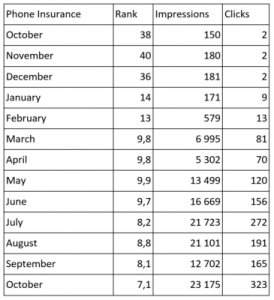
Even for major retail conglomerates, cost of stock is a major factor when it comes to efficient capital management. For an independent retailer, lean inventory levels are even more critical.
For example, if your business is holding more than $ 50,000 in stock, your potential cost of capital could equal 10%, the potential interest fee charged by your bank for a revolving credit line. That will cost your company $ 5,000 per year.
That $ 5,000 doesn’t include costs to store your inventory, what you’ll need to pay your staff to do physical stock counts nor to pull product for shipment. If some of that product becomes dead stock, then your margins and profits drop again as you discount items to move them out of inventory. Just think –– if the inventory level was half of our original example, what could be the impact of an extra $ 25,000 on a retail operation?
Take a look at industry averages of what an extra investment in different departments can do to your store’s bottom line:

In order to gain the revenues as seen in the chart above, it’s essential that your business be functioning at maximum productivity –– and manual inventory tracking across a multichannel environment simply isn’t productive. Beyond the rate for error, which can cause customer service concerns and headaches down the road, manual tracking of inventory requires a full-time employee –– one that could just as well be put toward any one of the services and roles outlined above.
Indeed, a key factor to running a lean retail operation is automation –- and automation works best when centralized. Here’s how that works: when operations are centralized through a retail platform that connects all sales channels, inventory is updated automatically as a sale occurs, no matter on which channel it is processed. There is no manual entry required. When new product arrives from a supplier, inventory is again updated across all channels simultaneously. Rules can be applied to the centralized backend in order to spread product offering differently across varying channels, if that is part of your business strategy.
A centralized inventory management system also updates the accounting side of the business, including asset tracking, profit and loss management and cash flow.
Tapping sales data within the retail platform also enables you to view your sell-through levels by product. This data is of great value when determining which products to stock and at which levels to ensure quick order fulfillment and to prevent dead stock.
Less Inventory, Bigger Bottom Line
It helps to negotiate with your suppliers for quick turnaround times or to think about dropshipping products as needed. Data collected through your cloud-based inventory management platform will help to highlight which products produce the highest revenues via which suppliers and timelines.
Let’s say you review your company’s sell-through report and determine 25 products have low but consistent sales numbers. Keeping just one of each in stock ensures same day shipment to customers, and with a supplier delivery agreement, you can receive another in stock the next day.
Or, you may offer a few rare, but high-priced items that sell on occasion, though it doesn’t make sense to keep them in stock on a regular basis. If an order comes in, you can still provide quality customer service by dropshipping the item to the customer from the supplier. And, with operations centrally controlled, asset tracking is all managed in real time to keep your accounts receivable, accounts payable, inventory and sales numbers all in line.
With less capital sitting in your store or warehouse, you’ll have more money to spend on other areas of your business. And by using a cloud-based, centralized retail management platform, you’ll have more time to spend on sourcing new products and scaling your business.
Learn how retailers can use inventory control to streamline their business in this free white paper.
(268)
Report Post







